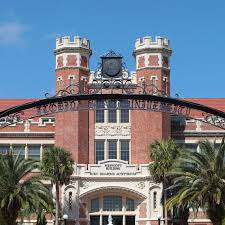Speaker
Description
Direct ΛN scattering data is extremely important and needed based on the newly confirmed Charge-Symmetry-Breaking (CSB) at a level of ~230 keV from the binding energy difference observed between ground states of $^4_Λ$He and $^4_Λ$H. Especially, the Λn data does not exist at all, thus the properties of Λn interaction has been assumed to be identical to that of Λp interaction. The resonance of Λnn system, if it does exist, may provide a unique and the only experimental data that can be used to determine the unknown properties of Λn interaction [1].
Because the $^3$H(e, e’K$^+$)(Λnn) reaction is unique for studying the possible neutral Ynn systems, a mass spectroscopy experiment (E12-17-003) with a pair of nearly identical high resolution spectrometers and a tritium target was performed in Hall A at Jefferson Lab. Although the experimental condition with the existing apparatus was not optimized for production of hypernuclei, enhancements, which may correspond to a possible Λnn resonance and a pair of ΣNN states, were observed with an energy resolution of about 1.21 MeV (σ). Since the statistics is low, definitive identifications cannot be made. However, the result is definitely interesting and an optimized experiment for further investigation with much improved statistics is needed.
In addition, although bound A = 3 [2, 3] and 4 Σ-hypernuclei have been predicted, only an A = 4 Σ-hypernucleus ($^4_Σ$He) was found [4], utilizing the (K$^-$, π$^-$) reaction on a $^4$He target. The possible bound ΣNN state is likely a Σ$^0$nn state, although this has to be confirmed by future experiments.
Reference
- I. R. Afnan and B. F. Gibson, Phys. Rev. C 92, 054608 (2015).
- I. R. Afnan and B. F. Gibson, Phys. Rev. C 47, 1000 (1993).
- T. Harada and Y. Hirabayashi, Phys. Rev. C 89, 054603 (2014).
- T. Nagae, T. Miyachi, T. Fukuda, H. Outa, T. Tamagawa, J. Nakano, et al., Phys. Rev. Lett. 80, (1998) 1605-1609.
| speaker affiliation | Hampton University / JLab |
|---|

